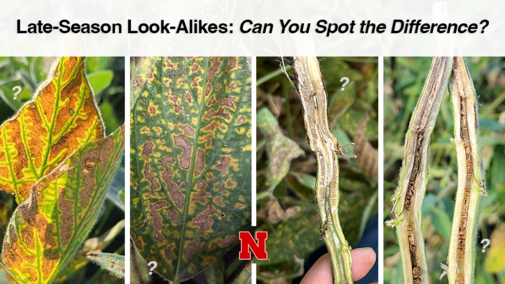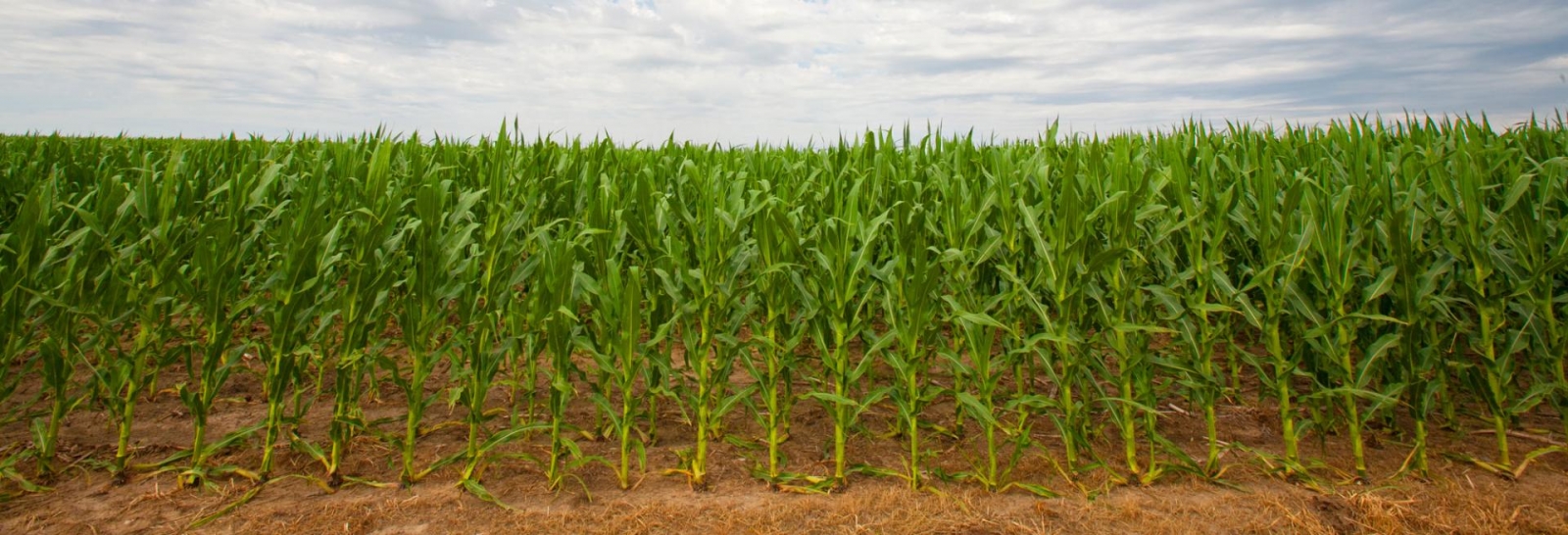Late-season conditions bring new stress to soybean plants as they begin to reach maturity. Hot and dry conditions can reveal or exacerbate significant symptom development in many fields. These symptoms can also be complicated by late-season rain on maturing soybeans. This document is meant to be a quick reference guide to help growers compare symptoms for diagnosis.
Diseases
Sudden Death Syndrome
This disease is caused by the soil-borne fungal pathogen Fusarium virguliforme. This pathogen infects the plants root system, but a toxin it produces causes foliar interveinal chlorosis symptoms when it is translocated to the leaves.
The roots of infected plants will sometimes have a blue-gray fungal growth on their exterior. Taproots are often weak or broken while being pulled from the ground, and split stems display light brown discolored tissue around the crown. (More info)
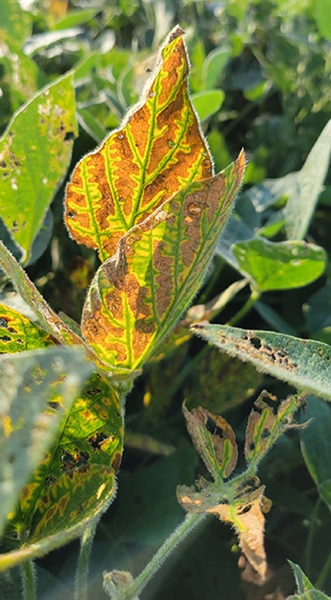
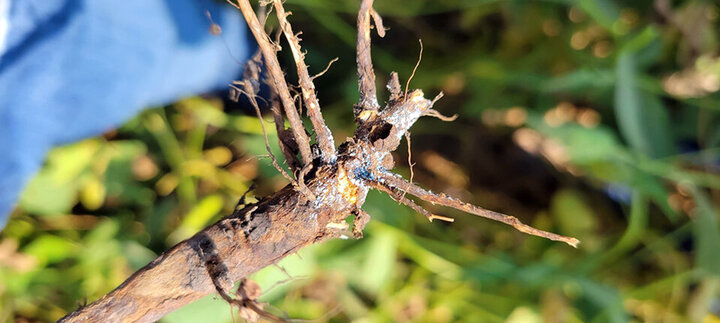
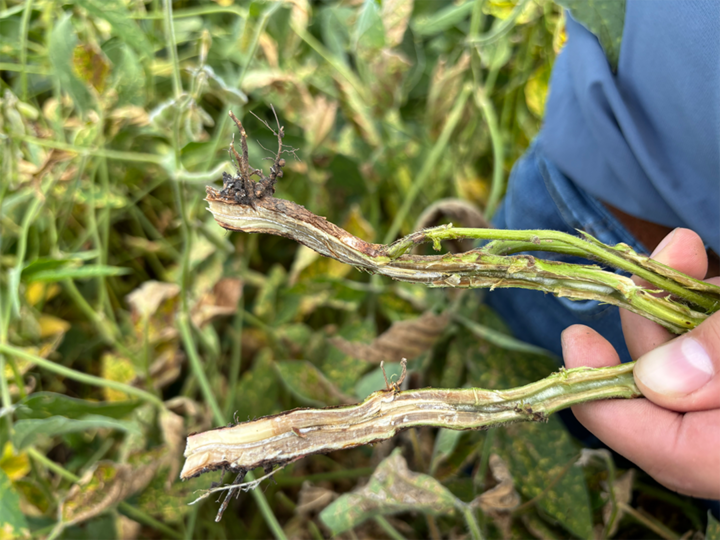
Brown Stem Rot
This disease is caused by the fungal pathogen Cadophora gregata. The most obvious symptom is foliar interveinal chlorosis, which is easily confused with sudden death syndrome foliar symptoms. However, brown stem rot has brown rot in the stem. Also be cautious that it is in fact a brown fungal rot, and not damage caused by the Dectes stem borer. (More info)
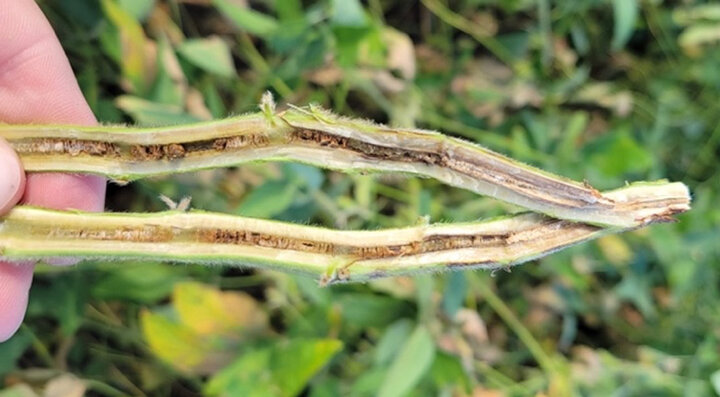
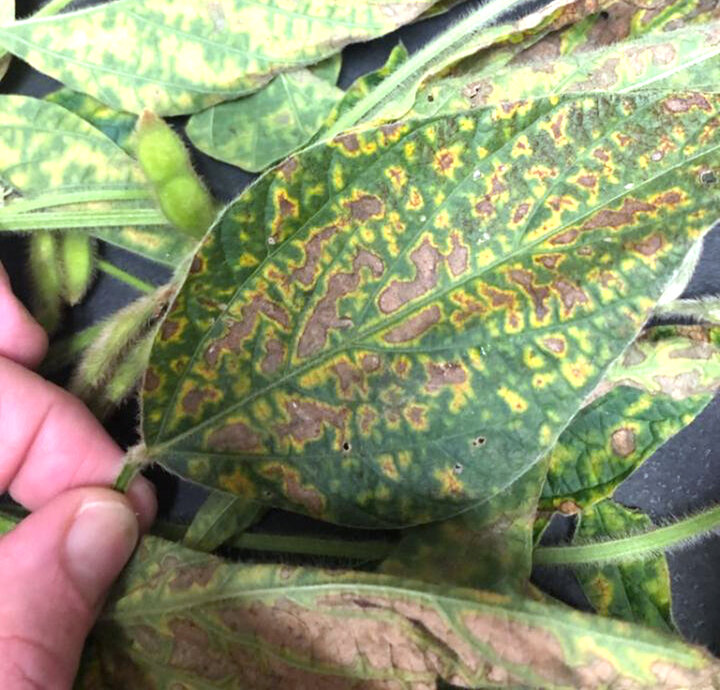
Red Crown Rot
This disease has never been observed in Nebraska, but it is becoming more common in neighboring states.
Symptoms include foliar interveinal chlorosis like sudden death syndrome and brown stem rot, so be cautious about making assumptions. This can be differentiated from the reddish-brown staining at the base of the stem, which will grow diagnostic spherical fungal structures under wet conditions. The pith of the crown may have gray discoloration and the root system will be rotted.
If you think you observe this in your field, please contact the UNL Plant and Pest Diagnostic Clinic, Attn. Dylan Mangel at 402-472-2559. (More info)
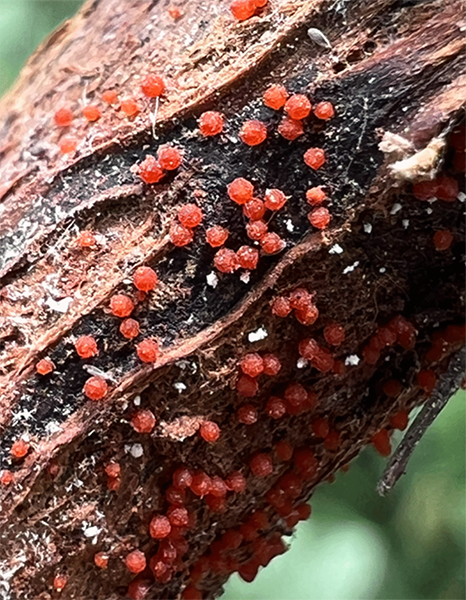
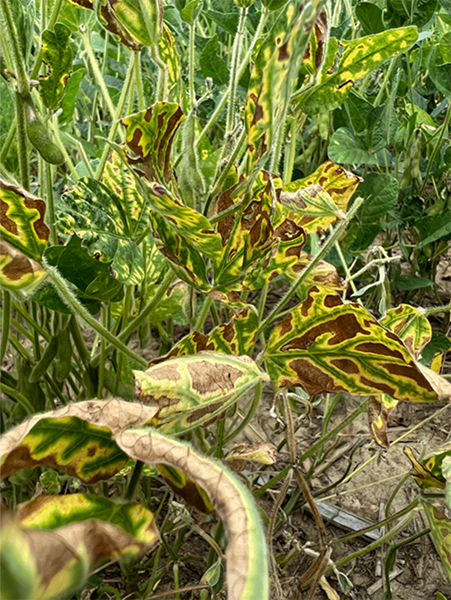
Pod and Stem Blight
This fungal pathogen infects in the early summer but has little effect on yield when only the plants are infected. In wet years, the seed can become infected which will lead to a seed decay. The symptoms of this disease are small spherical structures called pycnidia on the surface of the soybean stem. These are often arranged in vertical rows. (More info)
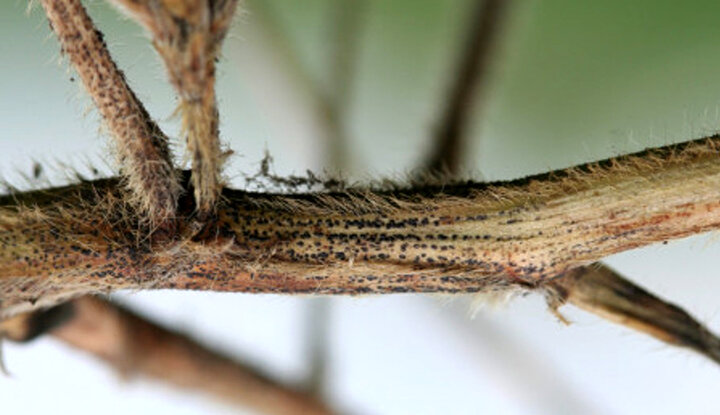
Northern Stem Canker
This fungal disease shows up as small reddish-brown spots at the base of branches or leaf petiole, which then expand longitudinally into slightly sunken, dark-colored cankers. Within these split stems, “zone lines” can often be observed. These can be seen in season but are often not noticed until after maturity. This disease is sometimes associated with interveinal chlorosis symptoms. This can result in premature plant death. (More info)
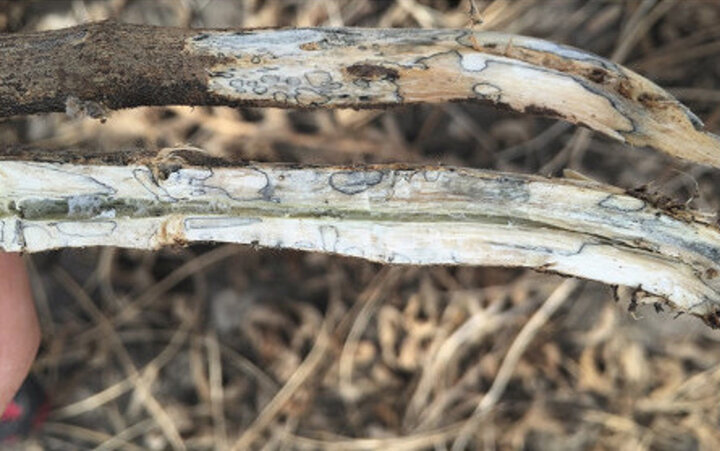
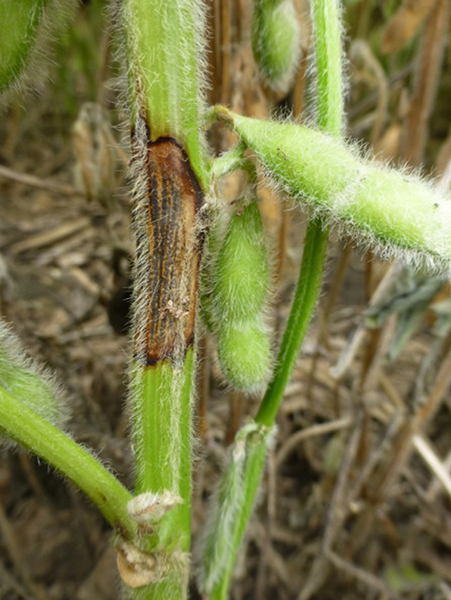
Charcoal Rot
This fungal disease is associated with microsclerotia (pinpoint-sized black spherical fungal structures) within the host tissue. While infection occurs early, symptoms are latent until late-season stress like drought and high temperatures allow the pathogen to spread within. This is most common in dry areas. (More info)

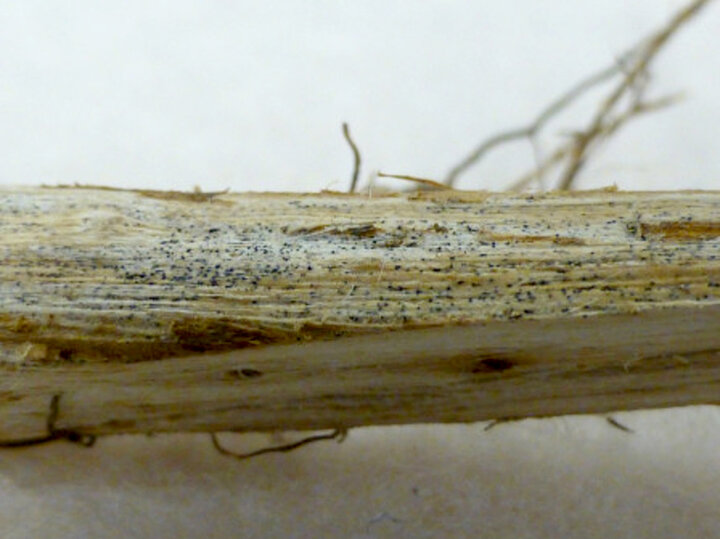
Common Late Season Insect Issues
Dectes Stem Borer
Splitting soybean stems in late August and September can reveal a hidden pest: the Dectes stem borer (DSB). Infestation of soybean begins when the adults emerge in June and lay eggs in soybean petioles. As the season progresses, the larvae move from the petiole into the main stem, where they feed almost entirely on the pith, hollowing out the center of the plant. As we get close to harvest, the larvae move to the base of the stem and girdle it, which weakens the plant and increases the risk of lodging.
Damage from DSB can sometimes be mistaken for brown stem rot; however, DSB-infested stems typically contain larvae, insect waste, and small holes at the points where petioles attach to the stem. When more than half the stems in a field are infested with DSB, it’s worth considering an earlier harvest to reduce the chance of yield losses from lodged plants.
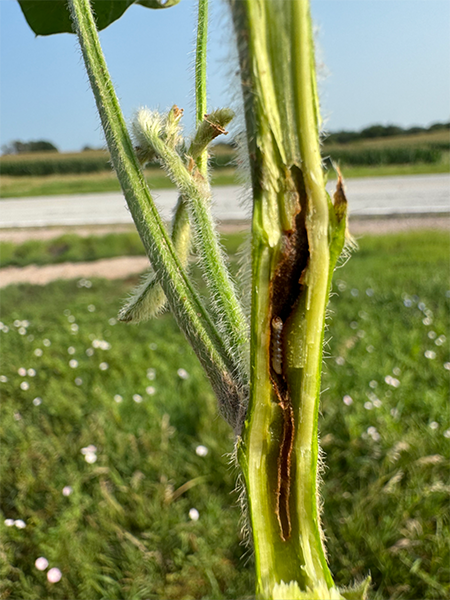
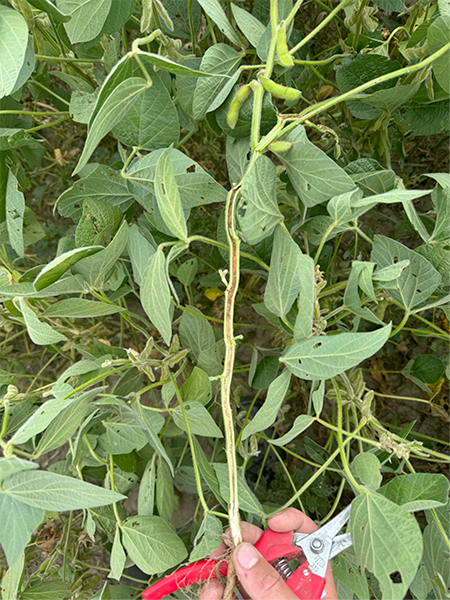
Late Season Gall Midge Damage
Soybean gall midge is a relatively new pest in soybean, and many farmers and crop advisors are still learning how to recognize it. Infestations often begin once plants reach the V2 stage. The larvae feed at the base of the stem and, under heavy pressure, can kill plants in as little as two weeks.
Symptoms of soybean gall midge can look very similar to Phytophthora root rot. One way to tell the difference is by pulling the plant from the soil. If it comes out easily, it is more likely Phytophthora. If it resists pulling or snaps off near the soil line, soybean gall midge is the more likely cause.
Gall midge does not always kill the plant right away. In many cases, it weakens the stem base, making plants more likely to break during high winds. Plants that break from gall midge usually have a jagged edge. This can sometimes be confused with Dectes stem borer, but Dectes larvae girdle stems later in the season — just before harvest — leaving a smooth cut rather than a jagged break.
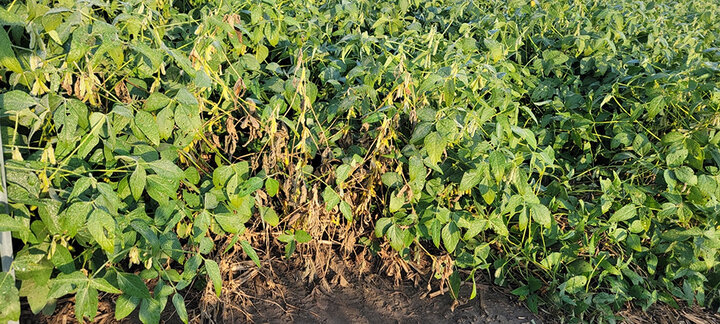
Other Issues
Triazole injury
Triazole fungicides can sometimes cause interveinal chlorosis symptoms. While this is most common around growth stage R3, these damaged leaves can be observed later in the season, in the mid-canopy. This is not likely to cause yield damage and there are no associated stem or root symptoms.
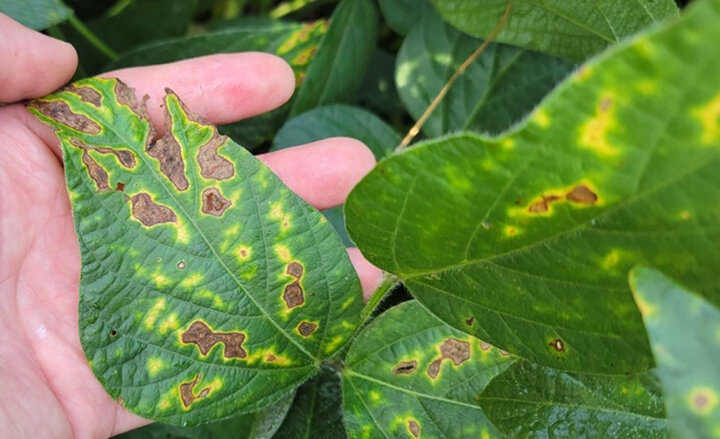
Additional Information
- Crop Protection Network Efficacy Guides: https://cropprotectionnetwork.org/publications/fungicide-efficacy-for-control-of-soybean-seedling-diseases
- Nebraska Extension EC130: https://marketplace.unl.edu/extension/ec130.html
- Soybean Gall Midge Alert Network: www.soybeangallmidge.org
